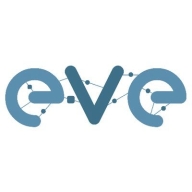

iBwave Unity and EVE-NG compete in the network design and emulation category. iBwave Unity appears to have an advantage with its pricing and customer support, while EVE-NG has a stronghold with its comprehensive features.
Features: iBwave Unity is noted for its advanced visualization tools, seamless integration for indoor networks, and intuitive design interface. EVE-NG is recognized for extensive network emulation, virtual and physical simulation support, and a diverse range of network prototypes.
Ease of Deployment and Customer Service: iBwave Unity offers a streamlined deployment process backed by robust customer support, aiding network design. EVE-NG provides flexible deployment options, supported by community forums and detailed documentation, requiring technical skill to leverage fully.
Pricing and ROI: iBwave Unity features competitive setup costs, delivering strong ROI through its efficient design tools and customer service. EVE-NG has a higher initial cost, offering significant ROI for businesses requiring extensive emulation capability.

EVE-NG is a versatile network emulator widely adopted by IT professionals for network design, testing, and training. It provides a seamless environment for creating virtual network labs, accommodating numerous network devices from different vendors.
Enterprise users appreciate EVE-NG’s capacity to simulate large-scale networks, making it an ideal choice for training and development. Its flexibility allows for deployment of complex topologies, enhancing learning and practical applications. EVE-NG integrates a wide range of devices, offering a comprehensive solution for IT environments. Challenges such as performance optimization and user documentation are areas users recognize for improvement. Effective use of resources and clear guidelines would enhance the overall user experience and facilitate more robust network simulations.
What are EVE-NG's most valuable features?EVE-NG finds application in sectors like telecom and education, where network simulation is crucial. Educational institutions use it for student training, while telecom companies leverage its features for network planning and testing. Different sectors benefit from its ability to mimic real-world network scenarios effectively, providing essential insights and reducing deployment costs.
iBwave Unity leverages a new UI for improved navigation with powerful 3D imaging. It enhances venue designs through detailed modeling and efficient project management, making it essential for accurate propagation studies.
iBwave Unity provides innovative modeling, focusing on improving propagation studies with realistic venue design. Key features like heatmap generation, multi-floor mapping, and signal coverage prediction deliver superior results. Its AutoCAD import and automatic calculations streamline processes, complemented by a comprehensive object database for efficient project management. While processing speed enhancements and additional RF prediction materials are desired, current features are robust in supporting large-scale deployments.
What are the key features of iBwave Unity?iBwave Unity is implemented across industries focusing on indoor network designs, facilitating WiFi, DAS, and ERRCS solutions in large facilities like malls, hotels, and business centers. These organizations rely on predictive RF heatmaps to enhance cellular and WiFi coverage, enabling design validation prior to site surveys.
We monitor all Network Modeling and Simulation reviews to prevent fraudulent reviews and keep review quality high. We do not post reviews by company employees or direct competitors. We validate each review for authenticity via cross-reference with LinkedIn, and personal follow-up with the reviewer when necessary.